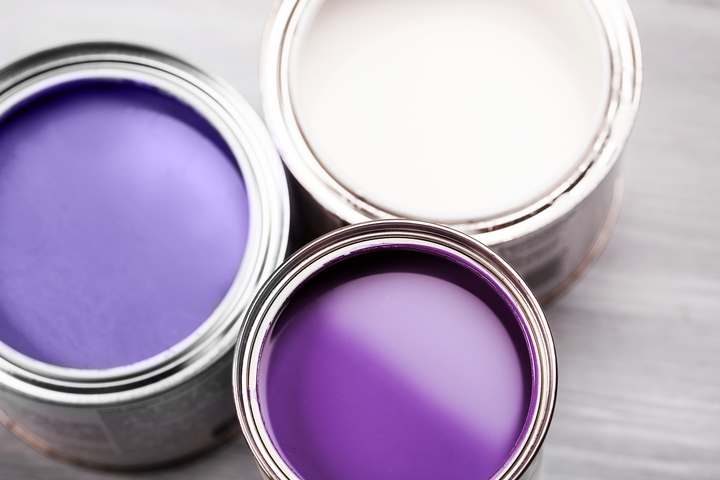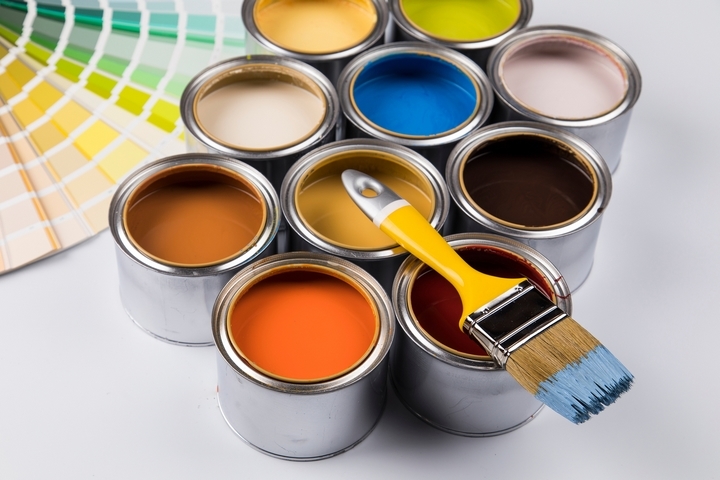
Go to any hardware store’s paint department, and you’re sure to quickly become overwhelmed with all the options. There are many different types of paints, primers, stains, colours, and even paintbrushes to choose from. Suddenly, the simple colour refresh project for your interior walls seems like a daunting task.
We can put some of your anxieties to rest by breaking down the different types of paint available for interior walls and when and why homeowners use them. Once you have a colour picked out, you can walk into a hardware store and make a confident decision about the type of paint you’ll use.
Here are ten different types of paint for interior walls:
Type #1: Oil-based Paint

For interior walls, you first have to choose between two paint makeups: oil-based or water-based. These two different types of paint bind to the walls differently and create different characteristics.
For long-lasting coverage, many homeowners prefer oil-based paint. These paints tend to be more durable and affordable. Because it’s so resilient, an oil-based paint is also an excellent choice for trim work since doorways and baseboards tend to suffer from daily contact that can eventually wear away at water-based paint. Oil-based paint can withstand wear and tear more effectively.
However, this type of paint can take forever to dry (up to 16 hours) and can hit you with a strong odour when it’s still fresh, so you’ll want to use a respirator while painting.
Type #2: Water-based Paint

On the other hand, many home painters prefer water-based paint, which is also commonly known as latex paint. It’s the most popular choice among homeowners thanks to its ease of use.
Water-based paint is quick to dry, easy to clean up, and doesn’t smell nearly as strong during application. Because it dries so quickly, you can easily apply a couple coats in one day to cover more wall space and complete your project faster.
Type #3: Primer

You’ll probably want to start your interior wall painting project with a primer, which is a special base coat that typically comes in white or grey.
Why? A coat of primer seals off the surface you’re about to paint, fills in pores, and protects the new wall colour from discolouration from the old paint colour. It hides any trace of the old paint colour, which is a must if you’re going with a drastically different colour than what’s currently on your walls.
Primer comes in both oil-based and water-based varieties. Oil-based primer should be used with oil-based paint, and water-based primer should be used with water-based paint.
Type #4: 2-in-1 Paint and Primer

It can sure feel like a hassle to use a primer all over your walls before applying paint. After all, it takes twice as much time and you need to wait for it to dry before you can move on to your paint colour. If you want to speed up the project, choose a 2-in-1 paint and primer, which has both your primer and your paint colour in one can. This should only be used when you’re sticking to a similar colour though. Otherwise, it’s best to go with a high-hide primer to hide any trace of the old paint colour.
Type #5: Matte or Flat Paint

Now, we’re on to the different types of paint finishes. The most popular finish for interior wall paints is matte. With a matte paint finish, there is no sheen or shine. This is good if you don’t want to draw too much attention to your walls or if you’re trying to hide imperfections in an older home. It’s also the most suitable option for ceilings.
It’s easy to apply, but the downside is that you might have to apply more than one coat to get a solid colour.
Type #6: Matte Enamel Paint

Similar to matte paint, matte enamel is great for kitchens and high-touch areas because it’s far more durable. It’s also very easy to clean, which can be a lifesaver if you have kids or pets, or if you often get cooking splatter on the walls.
Type #7: Gloss Paint

Gloss paint finishes can be used on most walls, making it a common choice among painting contractors. It has the highest shine of any finish. Because of this, it’s often used on woodwork, too. Because it’s so shiny, it will show every imperfection on your wall, and you’ll probably need to apply more than one coat and expect more drying time.
Type #8: Semi-gloss

A common interior paint finish, semi-gloss is more commonly used on trim since it offers a hard finish. It’s easy to clean and durable, making it ideally suitable for those heavy-use areas like doorways and baseboards. You’ll probably only need a single coat of this finish to get the job done.
Type #9: Satin Paint

This type of paint finish produces a low, soft sheen. It’s shinier than matte but not as shiny as gloss. It’s easy to clean but it can make imperfections stand out more, so avoid it on walls where you’re trying to cover anything up.
Type #10: Eggshell

The shine from an eggshell paint finish is very subtle. It doesn’t have the same smoothness as satin, so it won’t show every imperfection on your walls. It’s also easy to apply and often only takes one coat. You can typically cover more surface area with less paint with eggshell.